|
Are your words saying the same thing as your pictures?
One of the joys of living in a tiny TV market and watching local broadcast is having a good laugh at the expense of local advertisers. Granted, the advertisers may not see it that way. And yes, you may identify this unflattering indulgence as a case of schadenfreude. (Maybe that should be a Words Good Good Word Of The Week?) Schadenfreude, a delightful sounding German word for delighting in the pain of others is a morbid and mirthful time for everyone but the most conscientious and uncorrupt. But let’s face it: there are really only three good alternatives here. 1) Cry. 2) Stop watching. 3) Call the business and offer to fix their advertising. Since I‘m a cold-hearted human whose tear ducts have been paved over, crying is out. To stop watching would require initiative to do something else, and I’m inherently lazy. And being afflicted by a non-enterprising, introverted kind of lazy means I’m not reaching out to anybody I don’t have to. I’d rather gouge out my own eyes with grapefruit spoons. So, hello schadenfreude! Anyway, there’s a local funeral home that advertises on TV with some frequency. Their ad copy says what you expect: all the normal loads of caring, compassionate boilerplate. Most of the words talk about sincerity and sympathy and such. Then there’s the swimming pool and the alcohol. Yes, the image that is firmly cemented into my gray matter is the shot of the men in the family who run this caring and compassionate concern gathered around a poolside patio table with cold, frosty beer. Nothing in funeral service advertising speaks to caring and compassion like backyard swimming pools and cold beer. Now, shall I play devil’s advocate? The message sent by the cold, frosty beer is this: “If it matters to you, we are not Baptists.” And granted, there might be some method to that madness. If the receptionist at the funeral home is tired of answering every caller’s first question by saying, “Sorry, we are not Baptists,” that cold frosty beer by the pool is a good way to qualify the prospect before they ever pick up the phone. That insane bit of possible genius notwithstanding… As you know, when writing advertising, the single most important person in the message is the customer. In my humble if hyper-enthusiastic opinion, the best funeral advertising of all time is the Forest Lawn radio of years ago in Southern California. The campaign was called, I believe, “Celebrate A Life.” Each commercial was a monologue by someone fondly remembering a deceased friend or family member, and how incredible and joyous the sendoff was. I’ve never heard any advertisement that made me say, “Wow, I wish I could be that dead guy.” But this came close. (Talk about the opposite of schadenfreude!) Ya know what those Forest Lawn commercials never said? “And we chose Forest Lawn because the entire funeral home family likes to drink frosty cold beer around the backyard pool paid for by my funeral dollars.” Watch the words that are going with your pictures. Words and picture must complement each other. It doesn’t matter whether they’re on the screen or in your listener’s mind. The words might be good. But something in the equation might be bad. Unless, maybe, there’s a madness method afoot. Words good. Madness thoughtful? Cheers, Blaine Parker Your Lean, Mean Creative Director in Park City LIGHTNING BRANDING ON AMAZON The Kindle edition of our new book is now available at Amazon for the REDUCED bargain price of $9.95 For details about our new Lightning Branding courses, both do-it-yourself and we-do-it-with-you editions, click here. (There's even a video of us!)
0 Comments
DON’T BALTER ABOUT, YOUR BEER-SOAKED BABOON!
Yes, today’s Good Word is “balter.” The word "balter” means to dance artlessly, without grace or skill. In other words, it's dancing like a lot of geeky guys do at their junior prom. It might even be how we dance in this missive. Words Good does not claim to bring any particular art to you or your writing. But it does bring a great degree of clumsy enthusiasm. And occasionally, it offers up a fun word without any clear need for that word. However, with a word like “balter,” is "need" really the issue? Balter is about the fun, the thrills, the joy of lex. Words? Good! Balter? Better! As great as they are, you can’t run around plugging big, unusual words like “brobdingnagian” into your everyday conversation. But a word like “balter” can find a home in your daily chatter. Let’s say your friend Walter gets drunk and tries to dance yet again. You can call him Baltering Walter. Perhaps he was even that beer-soaked, baltering baboon at the top of the page. “Balter” is a good enough word that you could even start a whole movement about it. You might start printing and selling T-shirts that proudly proclaim, “Balter on!” and it becomes a thing. As an alternative to the annual spring debutante ball, where fresh young flowers are introduced to society, you’ll begin seeing that annual satirical rite, The Annual Autumn Balter Ball, where besotted balterers celebrate the death of the season among the brown, crunchy leaves of another wasted summer. And just by the way, speaking of trees… Whilst researching “balter” for your dining and dancing pleasure, Google informed me that “People also ask, ‘What is a Dendrophile?’” I had to ask, too. It sounds like something the cops might be able to run a sting for. "Let's nail those disgusting dendrophiles, damn it!" Indeed, knowing something about the word “dendrites” did not inform any further understanding of dendrophilia, which sounds just a little bit dirty. Seems a “dendrophile” is a tree lover. So very quickly, while baltering about with Google, your artless scribe succumbed to the juvenile joys of fabulous phonemes with no regard for usefulness or practicality. Not that there’s anything wrong with that. Anyway, Words Good Good Word for Daily Use is “balter,” to dance artlessly, without grace or skill. Bet you can find a place for it. Cheers, Blaine Parker Your Lean, Mean Creative Director in Park City LIGHTNING BRANDING ON AMAZON The Kindle edition of our new book is now available at Amazon for the bargain price of $19.95. For details about our new Lightning Branding courses, both do-it-yourself and we-do-it-with-you editions, click here. (There's even a video of us!) "What have I done?"
--Nicholson at the Kwai Bridge Indeed, what have I done? This screed is a mess. It all began with a question: What profound gem of copywriting or marketing can I toss your way as a parting thought for 2020 that will change your life in 2021? And the answer: Probably nothing. You are witnessing the not-knowing of writing a regular weekly assignment in an effort to be useful, purposeful and intentional. Sometimes, this exercise is just hopeless. Go ahead. Leave now. Save yourself. Something I’ve found myself doing lately is thinking back. Not with nostalgia, but curiosity. What writers have made me sit up and take note? What writers have influenced my work in one way or another? They are a diverse and intelligent lot, all smarter than I. Some of them you probably know. Ogilvy. Bernbach. Williams. Godin. Gossage. Well, maybe you don’t know that last one. Howard Gossage is a kind of a cult figure among copywriters. He died too young, but still had a profound impact on ad guys as diverse as Goodby Silverstein’s Jeff Goodby and late, great, Guerrilla Marketing guru Jay Conrad Levinson. But there are other, less likely writers. For instance, there’s the late New York Times columnist, Russel Baker. I was in junior high school when he wrote his column about how to carve a Thanksgiving turkey. His prose made it clear how hysterically funny a newspaper columnist can be--especially when he’s not writing about politics. I also remember the opening paragraph to Baker’s satirical piece about televised sports, titled “Kaleidosport.” “For days, we sat at the box mesmerized by sport. We saw the Mets beat the Nets and the Jets, saw Pancho Segura score a hole in one, and watched thunderstruck as Evonne Goolagong came off the bench in the final seconds of play to whip the mighty Nebraska Cornhuskers with a line drive to center field.” That’s just the beginning. It becomes a lesson in crazy. I remember discovering PJ O’ Rourke, known today as a conservative pundit, via an article he wrote for Car & Driver magazine about competing in an off-road rally in the new Jeep Cherokee. In the article, he touted the joys of packing a suitcase while drunk (when you get to your destination, opening the suitcase is like Christmas). He asserted that while Michael Nesmith has zero skills to offer as a rally competitor, he is an excellent conversationalist, and that was sufficient to put him in the car. And O’Rourke’s saying that a hotel-catering shrimp cocktail looked like “a Sea World exhibit gone horribly wrong” was an object lesson in how a simple line of excess can break up a roomful of people. Sometimes, a writer is sticky for just than a single line. For instance, Carl Sandburg’s “The fog comes on little cat feet.” It’s a seven-word gem that is firmly ensconced in my gray matter. In another life, it might have been good ad copy. It's succinct, crystalline and memorable. David Ogilvy is so very quotable. But from his writing, there are two lines that stick with me as quintessential. One is his classic headline: “At 60 miles an hour the loudest noise in the new Rolls-Royce comes from the electric clock.” The other line is an admonition to advertising professionals: “The consumer is not a moron. She is your wife. Don’t insult her intelligence.” Pow! Right in the kisser! (Oh, look. That's a quote from Jackie Gleason.) I can also pretend I read the classics. With that, I will say that Shakespeare has done it for me with one line, but not any of those lines so oft repeated they're now seen as clichés. Instead, it’s Marc Antony’s soliloquy over Julius Caesar’s body: “And Caesar’s spirit, ranging for revenge, with Ate at his side come hot from hell, shall in these confines with a monarch’s voice cry, ‘Havoc!’ and let slip the dogs of war.” No, it's not a cheery sentiment. But not all writing is cheery. Sometimes, it needs to be potent and powerful. (Forgive me for not writing this in the proper format for iambic pentameter.) An equally sticky, deadly line for me couldn’t be from a more different source. It is said by Charles Bronson in the movie, The Mechanic. [SPOILER ALERT.] Mob hit man Bronson has been training aspiring mob hit man Steve. Steve returns the favor by betraying Bronson and killing him. Steve moves into Bronson’s house. He's now living large on the memory of his mentor. He goes to the kitchen and opens the freezer door. In the freezer, Steve sees a note. Bronson’s voiceover reads: “Steve, if you're reading this, it means I didn't make it back. It also means you've broken a filament controlling a 13-second delay trigger. End of game. Bang! You're dead.” And the refrigerator explodes. Cheery and violent! (Monty Python.) What is the point of all this? Let’s call it a New Year’s Call To Action. Write inspired. And know that you’ll find inspiration in the unlikely places. Read what’s evocative. Find words that make your head explode. When words take you by surprise, ask, “Why?” Obviously, you can't copy it. That's called plagiarism. But you can hold it in your hand like a shiny jewel and raise it up to the light and understand what makes it shine. Even bad craft has value. Sit with a group of friends opening their fortune cookies and you see it in action. as they read their fortunes aloud, each person in the group writes something new based on that little slip of bad copy. There is value in raw material all around you. Be informed by it, and it can inform your writing. And your writing is one thing you do that can clearly set you apart. It will let you raise the bar in your service to others. Being surprising enhances the sell. And in your professional life--maybe even your personal life--the loudest noise will be the electric clock. Bang. You’re living large. Happy New Year. Got a favorite inspiring line? Reply to this email and share it. If we get enough, I’ll compile them for another Hot Shots. Cheers, Blaine Parker Your Lean, Mean Creative Director in Park City LIGHTNING BRANDING ON AMAZON The Kindle edition of our new book is now available at Amazon for the bargain price of $19.95. For details about our new Lightning Branding courses, both do-it-yourself and we-do-it-with-you editions, click here. (There's even a video of us!) Just had a shocking realization...
I have no idea how to write advertising. Yes, that seems odd for a guy who’s been doing it for over 20 years. But it’s the truth. I don’t know how. I’ve sold stuff. Lots of it. Won huge awards. Have my own business. And you can do it, too. But where does it all begin and end? There is no system. Everybody wants a system. But if you’re starting from the boundaries and structure of a system, how can the outside creative idea penetrate your work? Yes, purpose and intent are critical and compulsory. But so is chaos. Creating from chaos? How does this happen? Example... This morning, I’ve been sitting in front of the computer, pounding out taglines wild and reckless. None of them are good. Until… One is. Not great. But OK. What does that idea look like? I go to Google, type in a related search term, and hit “images.” Chaos with captions! But there amid the chaos, a new creative thought emerges. Could work. What about our big-brand competitors? What are they doing? I search a big brand by name. There’s some good stuff with good feeling. What can we do that’s different, that feels as good or better? And how will it be informed by our own brand veracity? Quick, Google search on reviews from our customers. Lots and lots of same same in there. But looking for the things that aren’t the same, that’s where to find the diamonds that feel right and good and true and tasty. No, they can’t be quoted in the ad copy. But they can inform the ad copy. And maybe that’s the challenge right there: what feeling informs the copy? How are you being informed? Ideas are everywhere except inside your head. Gotta beat the bushes so they fly out like a covey of lovey doveys. Does that even make sense? It doesn’t matter. Write it down. We have more tools at our disposal than ever. Try to create in a vacuum, and it sucks the life out of you. Use Google as your guide and other tools to find the chaos that brings ideas and informs the feelings and the order you’re trying to bring to bear on customer-winning copy. Ask questions. See what happens. Think up craziness. See what comes. Collect the gems. Slogging through a lot of stuff seems chaotic--but it can bring brilliance. I don’t know how I create ads. But I do know that what I don’t do is sit and stare at a blank and empty. It doesn’t help. (Unless it does.) It’s a systemless system and a methodless method for hoovering ideas into your vacuum. See? I really don’t know. You can, too. Cheers, Blaine Parker Your Lean, Mean Creative Director in Park City The snick of the penpoint across the page is proverbial. Familiar, like a casual friend. It’s been awhile. But he’s back. And it feels good to hear him. See him. Sense him. Be wary of him. (The pen can get a guy into trouble. And that may be happening right now…)
This morning in The Extra Hour that comes with the first dawn of Daylight Time’s death, I’ve been making coffee. Preparing to make coffee. Readying the little pot for when my little wife shuffles up the stairs of our little home and into the little hours of the new morning. This Extra Hour brings bonus time for focus. But…on what? The diminutive details. Like the spoon in the espresso-grind bag of dark-roast Hispanic-heritage coffee that folks routinely mistake for Cuban but was founded by an entrepreneur Spaniard and is as American as the Brooklyn Bridge and born in the Bronx. In this silvery spoon, the dark, powder-fine grains of deep-brown black heap to a precarious peak and hold before dropping into the filter. Why is it I never noticed that except here in The Extra Hour? And speaking of The Extra Hour, the kitchen clock has been losing time. Like, maybe it’s trying to get that hour back. I go and grab a double-A battery from the place where I keep the recording gear. I take that battery to the clock and replace the old one that’s there. The old one has an unusual, unidentifiable label. It’s some imported battery brand not available to the general public and is sold only to the manufacturers of a giant-faced clock that is operated by a tiny electric motor fueled by the second littlest of the standard-size single-cell cylindrical dry batteries known to man. It is also double-A trash. “Thunk” into the can. It sounds as if it struck soft into yesterday’s damp coffee grounds. And the snick of the penpoint across the paper in The Extra Hour brings a question: What now? And what does this have to do with advertising anything? Simple. Do you find yourself challenged by trying to create copy that’s surprising, engaging or is candy to the ear? Try paying big attention to little details. For a moment, forget the sell and focus. Drill down into the sounds and the sensations. Just take a breath and… Hold. Listen. This is not a meditation. This is a moment. A moment is a brief period of time. It is also a force in physics. For example, the force it takes for an object to resist inclination and return to position is called a righting moment. But here, let's call this our writing moment. Take that moment to hear what happens. Feel the space. It is rich with the subtle force of soft sensations and quiet things going on--even in a crowded room. (Why do so many writers like working in cafés and bars? It’s not because they’re quiet…) There is a copy culprit to whom we all fall victim. We don’t take the time. We’re losing minutes. We rush into the creation of busy words that fill the space instead of filling the ear and on into the heart. It happens in so many ways. A lack of care. A lack of question. A lack of sight and sound. We ask ourselves, How hard can we push this motivational boulder over the top so it comes crashing down on our customer, smashing into the crazy conviction that there has never been a better time to rush in and buy now. That is, after all, the common question. But it yields an answer that nobody needs. That’s because… It’s not the question the customer is asking. Right now, our culture is awash in noise. Everyone is shouting. Nobody is listening. So shut down your computer. Take a pen. Grab some paper. And… Scribble the words--the ones that come when you start to feel the room and see the shapes and feel in your gut the whims being whispered at you. Grasp the gold that’s just lying there for the taking and see how it suddenly informs your mission--which may not even be yet defined. That is, after all, how we ended up here in The Extra Hour... LIGHTNING BRANDING ON AMAZON The Kindle edition of our new book is now available at Amazon for the bargain price of $19.95. For details about our new Lightning Branding courses, both do-it-yourself and we-do-it-with-you editions, click here. (There's even a video of us!) Cheers, Blaine Parker Your Lean, Mean Creative Director in Park City We spend so much time talking brand, we don't spend a lot of time talking copy... And recently, your relentless scribe had the opportunity to write a piece of direct response copy that was 100% successful. Please understand, I'm not patting myself on the back. Had I failed at this, it would've been inexcusable. Instead, I'm offering it as an example of how anyone can write a good advertisement for almost any product or service. Personally, I have never in my life written an advertisement for a motor vehicle or a motorhome. So, that makes me unqualified in that area, right? Of course not--but a lot of so-called "pros" will try to tell you that. First, some backstory. As you may know, the fabulous Honey Parker and I have a podcast called CoupleCo: Working With Your Spouse For fun & Profit. For two years, we've been driving across the country in the CoupleCoach, a 25-foot C-Class motorhome. We've been interviewing entrepreneurial couples about crushing it in business without crushing each other. We usually show up with two black bags. One contains good microphones. The other contains good wine. (People are scared of microphones. They are not scared of wine. It helps loosen up the conversation and makes the subjects very happy.) COVID-19 sent our transcontinental travel plans were sent into a sideways skid. Nobody really wants strangers showing up, regardless of whether they're toting microphones and wine. So, we decided to sell the CoupleCoach. Step One: Take the CoupleCoach and have the outside professionally cleaned by a commercial truck washer, complete with Armor All on the tires. (BONUS: You feel really cool sitting in line, waiting with all those tractor trailers.) Step Two: Park the RV someplace pretty. Take a comprehensive range of photos using the phone's camera set to HDR. Use a photo editor to crop the images, deepen them and boost the color. Step Three: Write the copy. Here's where the fun begins. (If you fail to see the merriment in this mission, you'll probably just want to go hit the unsubscribe button. That's OK.) Creating this copy requires understanding: a) your Core Customer, b) the benefits of your product, and c) your copywriter's voice. CORE CUSTOMER: This motorhome is smallish at 25 feet, but it's also expensive. It's also built on a Mercedes Sprinter chassis, which is an object of desire. So the Core Customer presumably knows something about Mercedes, and has some money to burn. The customer will have a decent level of income and sophistication--and little to no experience with RVs. We'll call the customer Sophisticated Newbie. So, while a first motorhome might be a daunting prospect, Sophisticated Newbie has accomplished things in life. This person also wants to have fun. BENEFITS: The key benefits are a) the Mercedes chassis, b) the rig is really clean, c) it is loaded just enough, d) it is well maintained, and e) it's a great size for a newbie. VOICE: Did you know that I'm a smartass? (Don't answer.) We'll have to reign in the smartassery for Sophisticated Newbie, but just enough. This person is buying a fun machine, so we still need to have some fun. We have to project confidence with a smile, and be reassuring to the our Sophisticated Newbie. Now, about the competition... Just for the fun of this exercise, I found two competing ads for a comparable rig. Same maker. Same chassis. Same model line. Here's the first ad: "Approx. 8900 miles, two slide outs, Mercedes diesel, kitchenette, rear queen size bed, Onan generator, propane range, microwave, electric/propane fridge, A/C, propane heater." Twenty-three words! Zero character! Buy now! (The minimal photography and drab images are especially persuasive.) The other ad has more photography. It's somewhat better. At the same time, it manages to make the RV look like a mobile prison cell. Even on the outside. And the owner's stuff is still all over the place--in the RV, in the closets, in the storage compartments. His ad also has more copy. It's about 300 words long. Here's an outline of what each paragraph details:
So, here now, your relentless scribe's copy for the CoupleCoach... The Coachmen Prism 2200LE is the best of both worlds: the legendary Mercedes Sprinter 3500 chassis, and a roomy, comfortable C-class coach. (A friend with a much more expensive Sprinter-based C-class peeked inside this one, and was really bummed out. His rig was just more expensive. This one was more roomy.) The Sprinter is a pleasure to drive. And once you park and open the slide, the coach has plenty of living space. We've had 8 people inside and felt perfectly good about it. (Not sure you can do that in a van.) The walk-around queen bed features the upgraded mattress. It's surprisingly good by any standard, not just RV-bed standards. The entertainment center features a 32-inch flat-screen TV and a surround-sound bar, as well a stereo system with CD/DVD. Kitchen features a combination microwave/convection oven, a three-burner range, and a dual-fuel refrigerator (electric/propane). Works great. Always had ice for our beverages. Bonus: we bought this rig new. That means we handled all of the road trials so you don't have to. And (for real) we've never pooped in the toilet. This is one clean rig. We've lived and worked in it for extended periods. The swiveling cab seats are great for that. We've always had plenty of storage. There's also a custom made black walnut dinette tabletop, and a custom sink cover/cutting board. Both are handcrafted artisan product by Boone Creek Farm in Missouri. (The original factory components are also still in the rig.) All regular maintenance has been performed by Mercedes Benz of Draper. We've also had warranty work on the coach performed at the Coachmen factory. Additionally, we had Coachmen install tank heaters so the rig can be used in colder weather. The Onan generator has very low hours. There's a Zamp portable solar panel, which is really convenient. When you park your rig under a shade tree, you can still put your solar panel out in the sun. (The coach came pre-wired for solar as a standard feature.) The receiver hitch is great for your bike rack. All six tires are fairly new, and still have plenty of life left in them. When not in use, the rig has always been stored under cover in St. George. Here's a link to the full specs... Is this genius copy? Heck no. It's just fun and authentic--and it did something really, really useful... It attracted the right people. Everyone we spoke to was a pleasure. (The scammers notwithstanding, of course. Everyone tries to get a piece of you. Hint: a text message sent at 2am is a dead giveaway that you're not really an interested buyer in Arizona who doesn't have ready cash but will provide a cashier's check, sight unseen.) Everyone who reached out was new to RV'ing. They were all happy, interested and interesting. By day four, we had a conditional offer over the phone from a retired college professor and his college professor son. They drove four and a half hours to come pick it up, we went to the credit union to confirm their cashier's check, they drove away, and I had to tell four other people whom I would've liked to meet that the RV was sold. And why did this happen? The buyer said exactly what we'd hoped: the photos made it look attractive, the copy made it sound attractive, and talking on the phone immediately confirmed that this was just the seller and the deal he'd hoped for. And this is not that hard to do. Yes, I write better than some people. Yes, I have more experience turning a phrase than many. But everyone has a voice and a command of the language. And something I don't have that you do is your story. Whatever you're selling, you have a story that goes with it. That story needs to be attractive. What is it that makes a prospect desire what you have? Hint: it is not saying, "Don't try to scam me, wait until I get around to you, and here's just one of the problems you're going to buy when you buy from me." It's saying, "Wow, isn't this great!? We've had our fun with it, and you can, too!" The easiest way to do this is write a letter to someone you know about what you're selling and what they'r like about it. Then, don't mail it. Turn it into an ad. You can write an ad for almost anything and make it better than the other ads for similar products. Just tell me a) your story, and b) what's in it for me. If you'd like to see the classified ad (with all the photos) at KSL.com, click here. Cheers, Blaine Parker Your Lean, Mean Creative Director in Park City DID I GET IT WRONG LAST TIME?
If you were paying attention to the last screed, we left halfway into answering a question from Chris Pollard, champion radio creative director in Ontario, to wit: "How do we move the needle?" He's asking how to get affordable training for the people on his staff so they can create better radio advertising. One of the first things I said was: Even if you don't care about radio, stick around. This is going to be worth it. And I still stand by that. Thank you for being here. However, last time, my first recommendation to anyone wanting to create better advertising was to become a geek for advertising. It doesn't matter what kind of advertising you do, you need to understand techniques and history. DID I JUMP THE GUN? In preparing for this follow up, I realized: Uh-oh. Did your relentless scribe put the cart before the horse? Last week, I invoked the name of the father of Guerrilla Marketing, the late, great Jay Conrad Levinson. Back in the day, he had the good fortune to be hired and then fortuitously fired by Howard Gossage, the brilliant eccentric and marvelously creative ad man who ruled advertising from atop a converted firehouse in San Francisco during the '60s. The delightful quirk that drove so much of Mr. Gossage's work no doubt rubbed off on Mr. Levinson, who offers a directive in his bible of guerilla marketing. And that directive is blindingly important in this whole question of how to create better advertising. He said, "Get people's attention." WELL, DUH. OF COURSE YOU WANT TO GET PEOPLE'S ATTENTION. But wait there's more. He went on to say something that so many people creating advertising never stop to consider. "People do not pay attention to advertising." What?! Eegad! Blasephemy! People do not pay attention to advertising?! Why should they not be interested in the brilliant words that come streaming forth from my word processor! Why not, indeed. As Mr. Levinson continues, "...they pay attention only to things that interest them. Sometimes, people find those things in advertising." Getting their attention does not mean yelling, "Free beer!" And then saying, "Now that I have your attention, I'm selling this horse." It means something else. "TO BE INTERESTING, BE INTERESTED." No, that is not Mr. Levinson speaking. Nor is it David Ogilvy, as the internet meme machine would like you to believe. I can guarantee this, because the quote appears two thirds of the way down page 88 of that grand old chestnut of persuasion, How To Win Friends And Influence Peopleby Dale Carnegie. If people pay attention to what interests them, and you wish them to pay attention to your advertising, it becomes necessary that your advertising is interesting. And this takes us to a very basic element of writing great advertising. It's not about advertising. IT'S ABOUT PEOPLE And this is where we should've begun the discussion. Not at becoming a geek for advertising. But at becoming a geek for life, the universe and everything. Anyone can explain the basic mechanics of creating an advertisement. But what can't be taught is a curiosity about the world outside the advertisement. And that's something you find in all the great advertising writers who have come down the pike. To a person, they are interesting--but more importantly, they are interested. And I guarantee you that when Mr. Pollard in his office in his radio station in Dryden in Ontario in Canada at the top side of North America hears this, he's going to wonder what the heck has happened. ALL THIS MAN WANTED WAS ADVICE ON RADIO TRAINING He's received commentary on advertising geekdom, is now being told that an interest in life, the universe and everything is really what every writer needs, and what on earth is he supposed to do with that? I feel your pain, Mr. Pollard. It's frustrating for me, too. Don't worry, we will get back on topic. But first, we need to beat this mule some more. Too much thinking in business (and in life) is channeled and labeled and siloed and stratified and packaged and otherwise rigidly defined. There is no room for anything that isn't categorized. EVERYONE WANTS WELL-DEFINED ANSWERS AND SOLUTIONS Understandably. Here's the problem with talking about training people to create better advertising. There's no on-off switch. You can't just send someone to a training program and come out with a top-notch copywriter or a genius voiceover performer. It's all a process. And the process begins a long time before someone walks into a radio station or an advertising agency or even your business and says, posing with arms akimbo, "I am writer!" Instead, they've spent their lives, walking around and bumping into things, wandering down the road less traveled, wondering "What the heck?", and asking questions. AND THIS IS KEY Good advertising writers are interested. They have curiosity. They want to know more. They ask questions. Then, when it comes time to write an ad, after they've asked all kinds of questions about what they're supposed to be selling, they have no problem sitting down writing endless awful advertisements for it. ONE NEVER WRITES A GOOD AD BEFORE ASKING QUESTIONS AND WRITING CRAP One big problem? A lot of people stop at the crap. They think it's good. They parade it around and people applaud. Because maybe it's clever. Maybe it seems like an advertisement. But in reality, all it really is, is an ad-like object. The world is filled with ad-like objects. You see them and hear all the time. And they make you feel nothing--unless they make you feel the wrong thing. OFTEN THEY'RE FUNNY And there's nothing wrong with funny advertising. But funny is not the goal. Funny by itself makes the prospect feel the wrong thing. The funny needs to be relevant. The funny needs to connect with the sales message. And this is one of the big challenges we face. Especially in radio, there's a perception that advertising needs to be funny. No! Advertising needs to be relevant. That doesn't mean it needs to be a "buy now, but wait, there's more, there's never been a better time to buy this baloney!" pitch fest. AN INTERESTED PERSON UNDERSTANDS PSYCHOLOGY Not formal psychology. I took psych 101 in college. It was awful. And was obviously taught by somebody badly in need of a psychologist. We're talking practical psychology, or whatever else you want to call it. Mindset. Thinking. Makeup. Sensibility. Consciousness. Attitude. Feeling. Ah, there's that word. "Feeling." How does the advertisement make the prospect "feel." The interested copywriter understands this. The interested copywriter understands the feelings of the person to whom they are speaking, and how to hit the emotional trigger that makes that prospect feel, "Here's the solution to my problem." THAT'S PART OF EMOTIONAL INTELLIGENCE And that kind of emotional intelligence about the craft comes from spending life, walking around and bumping into things, wandering down the road less traveled, wondering "What the heck?", and asking questions. It does not come from saying, "Hey, we're gonna write a funny ad that wins an award!" Before anything else happens, the right person with the right attitude has to be at the helm of the great ship HMS Word Processor. Fortunately for the indubitably frustrated Mr. Pollard in his radio station in Dryden, Ontario, Canada, North America, 49 degrees 47 minutes North, 92 degrees 50 minutes West, we will be getting around to a practical and concrete answer to his question next time. As always, Blaine Parker Your Lean, Mean Creative Director in Park City "HOW DO WE MOVE THE NEEDLE?"
That's the question. It comes from Canada via Chris Pollard, Creative Director at 92.7 CKDR in Dryden, Ontario. And even if you don't care about radio, stick around. It's going to be worth your while. When we threw out the solicitation for your burning questions about branding and marketing, Mr. Pollard was first out of the gate. He asked, "How do we move the needle?" Normally, the phrase "moving the needle" is a reference to generating sales for a client. Creating advertising that sells more product is moving the needle. But in this case, Mr. Pollard is talking about training his team in making better, more creative and more effective advertising. He says, in part, "A lot of marketers out there...want to improve their skills. But training opportunities are sorely lacking. Is there something out there we're missing? My corporate cohorts and I have discussed it several times over the years, and our searches always come up empty." I can guarantee you, the answer is not one he's expecting, and it's going to be more applicable across the board than you expect. RADIO IS A VAST WASTELAND With apologies to erstwhile FCC Chairman Newton Minow, whose famous "vast wasteland" speech to the National Association of Broadcasters in 1961 sent TV programmers a searing message about the quality of their content, radio has become a creative desert. A fact of the business is that wildly talented and dedicated people get sacked because they're "too expensive." More and more, everything is run by beancounters lacking insight, employing low-wage bean counters who lack skill or intellect, supervised and trained by people who aren't all that great, either. or, who have just given up and do what they can with what they're given. (I am not painting Mr. Pollard's employers with this brush. They seem to be an exception.) Mr. Pollard goes on to talk about the few, expensive courses out there, and the many affordable ones--many which have fallen by the wayside because nobody can get their stations to pay for them. So the real question is: Where is the affordable training? To which I say: It's all around you. Just do it. Become A Geek For Advertising Not just radio, but all advertising. I'm routinely shocked how many radio people do not have any comprehension of how advertising works, what constitutes good advertising, and how they know nothing about advertising history. Radio has its uniqueness, for sure. But it also shares commonality with all advertising in that it's a form of persuasion. It doesn't matter what kind of advertising you do, you need to understand techniques and history. If you say "John Caples" to most advertising (and radio) people, they look back at you with all the comprehension of a Labrador retriever. IF YOU MENTION CAPLES' MOST FAMOUS HEADLINE? You might get a smattering of more comprehension. The famous headline is, "They laughed when I sat down at the piano--but when I started to play!" It's an ad for at-home music courses, and it is famous in advertising to the point of being a cliché. The ad taps into the emotional desires we experience as humans. It features a cliffhanger headline that makes the reader say, "Tell me more!" It makes the pitch with a human and real sounding story from a happy customer. It's a brilliant lesson in how to make an ad work--and it was written almost 100 years ago. Caples also wrote a landmark book called, Scientific Advertising. Caples had no patience for funny advertising, and he's very dry. But the book has valuable lessons. There's even an awards competition named in his honor that requires entrants to prove how well their advertising worked. Besides Caples' book, there are also plenty of other books available to anyone who's interested in understanding the history and fundamentals. Yes, times and fashion change. FUNDAMENTAL HUMAN PSYCHOLOGY DOES NOT That's why so many books on advertising, while being out of date as fashion goes, still provide a killer education in advertising. Just for example... Ogilvy On Advertising One of those old chestnuts about the business, it too provides important information about how to craft advertising. And if you read it, you will learn why Ogilvy loved radio and called it, "The Cinderalla medium." Bill Bernbach's Book An incredibly expensive book because it's out of print. But it's a lesson from a man who changed the face of US advertising almost singlehandedly. It's filled with simple and pithy advertising that provides brilliant examples of conceptual thinking that make you stop and say, "Wow." The ojne ad you probably know: Vollkswagen "Think small." When Advertising Tried Harder Like the Bernbach book, this is also out of print and expensive. But it provides a litany of pithy, in your face ads that, again, helped change the face of advertising. Hey Whipple, Squeeze This Luke Sullivan's "Classic guide to creating great ads" is funny and potent and irreverent and will make you spit chocolate milk out of your nose. Well, maybe not the latter. But it's an excellent guide. Wizard Of Ads If you haven't read Roy Williams' first book, get it. Now. AND ONE OF MY PERSONAL FAVORITES... The Book Of Gossage This is an enormous and heavy trade paperback about a cult figure in 1960s San Francisco advertising, Howard Luck Gossage. This is the man who coined the phrase, "When life gives you lemons, make lemonade." Gossage had his ad agency in a converted firehouse. He was an intellectual eccentric who once fired a junior copywriter by the name of Jay Conrad Levinson. Yes, the father of Guerrilla Marketing worked for Gossage, and one day after submitting a copy assignment, Levinson got it back with a note that said something to the effect of, "There's nothing more I can teach you. You're fired." Levinson has a chapter in the book. Jeff Goodby wrote the introduction. If you don't know who of either of those people are, you're way behind the curve. YES, ALL OF THE BOOKS ARE ON ADVERTISING IN GENERAL Not radio. And they are useful informative, and important. Each of them, in their own way, leave you thinking, "Wow, that's good." At Slow Burn Marketing, we have always maintained that small business advertisers can take many cues from big advertising agencies. And these books are just part of the legacy that Big Agency Advertising has to offer the small-business advertiser--even one who works in radio. This rant is going to go on into next week. There's too much more to say and not enough time in which to say it. But once again, if you want to create better advertising, stick around for next week. It'll be worth it. As always, Blaine Parker Your Lean, Mean Creative Director in Park City |
AuthorBlaine Parker is prone to ranting about any and all things related to brand. In many ways, he is a professional curmudgeon. While there is no known vaccine for this, the condition is also not contagious. Unless you choose it to be so. Archives
February 2022
Categories
All
|
|
© Copyright 2020 Slow Burn Marketing LLC |
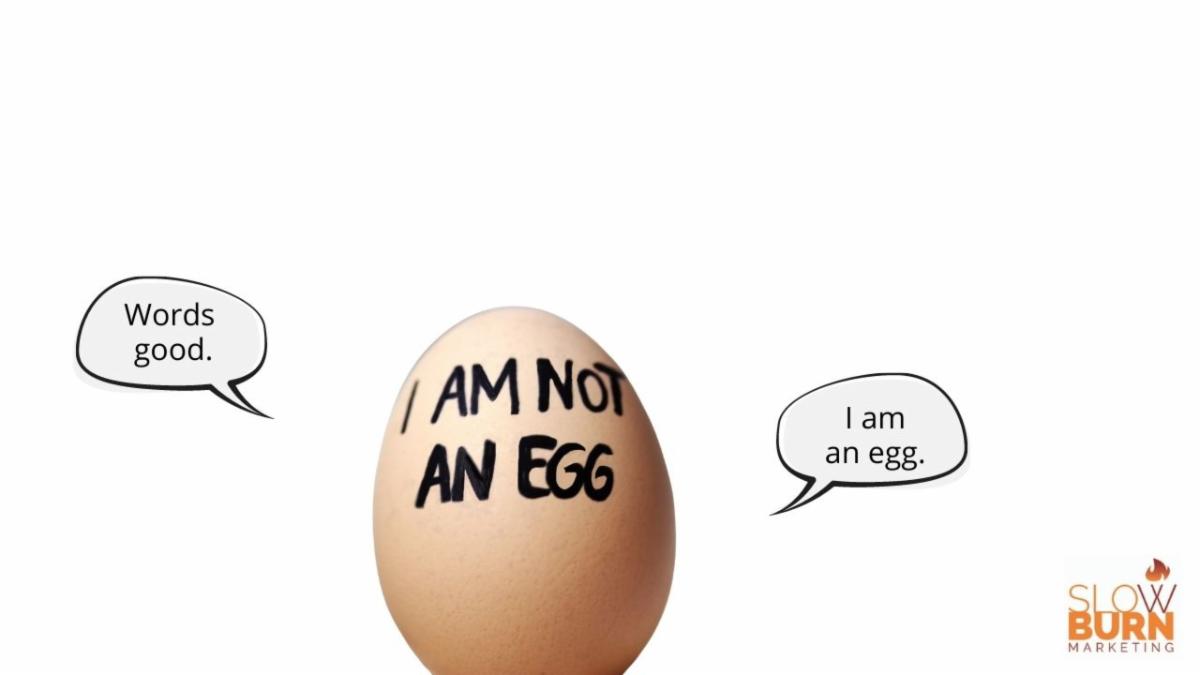
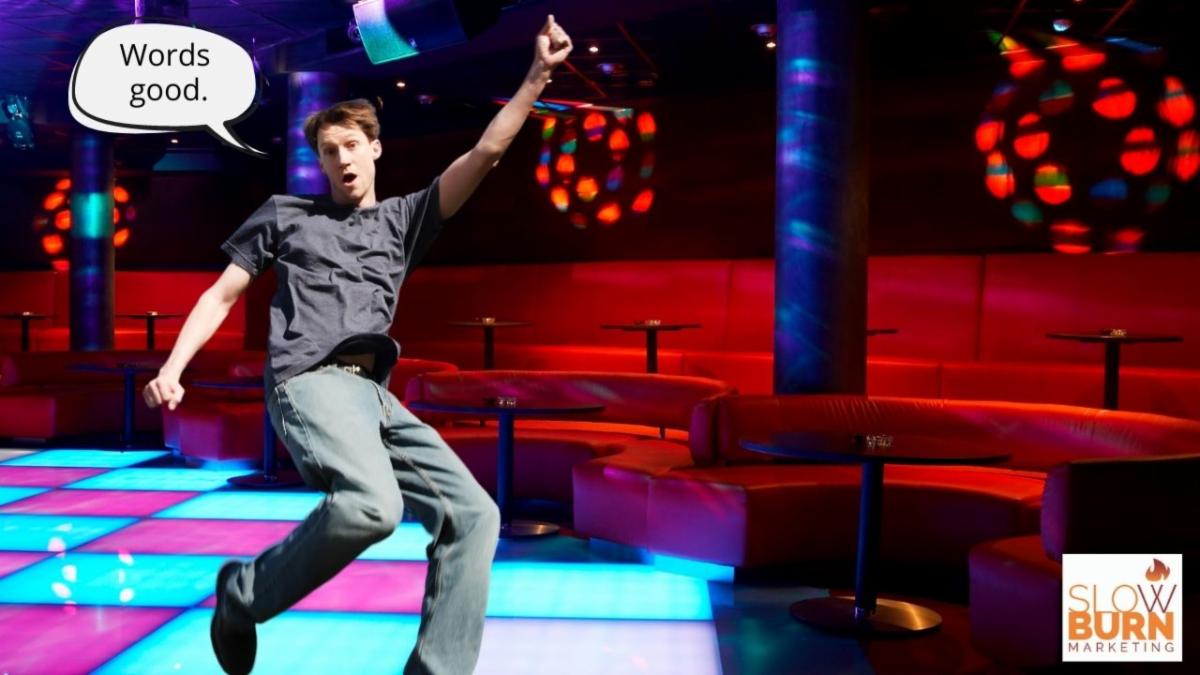


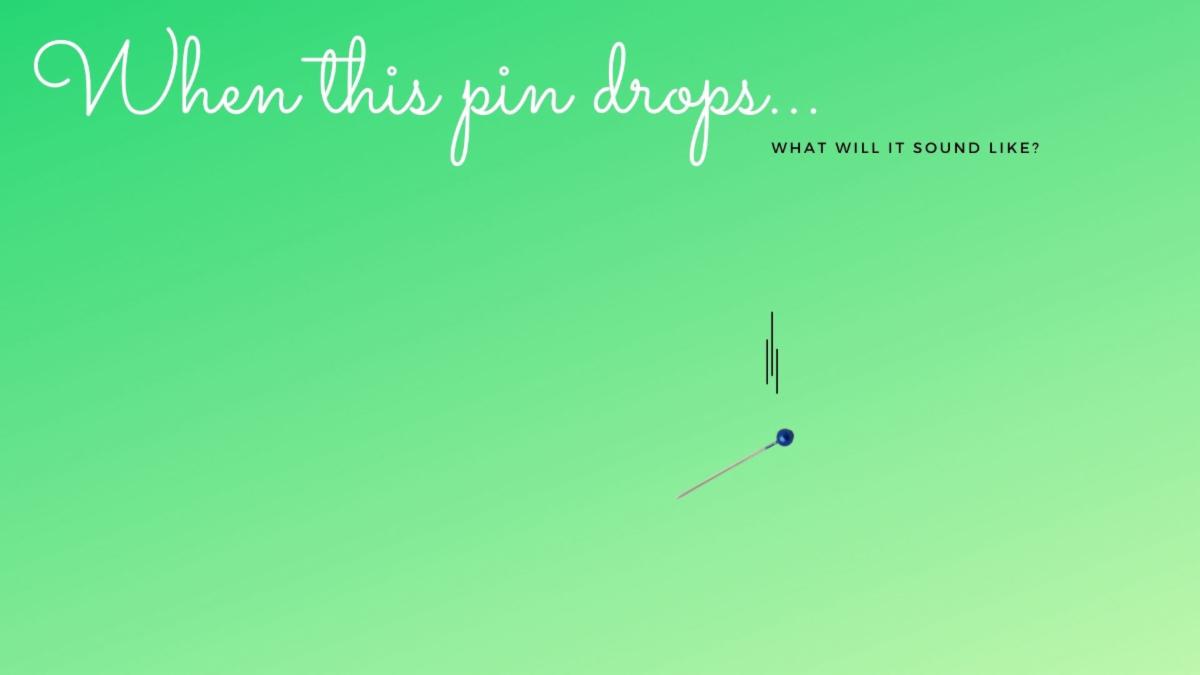
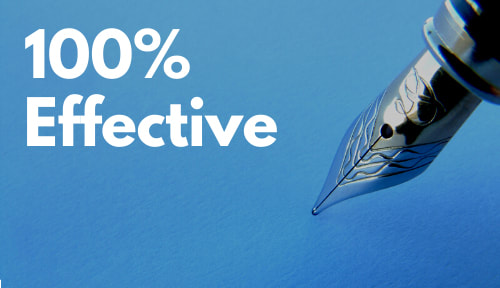
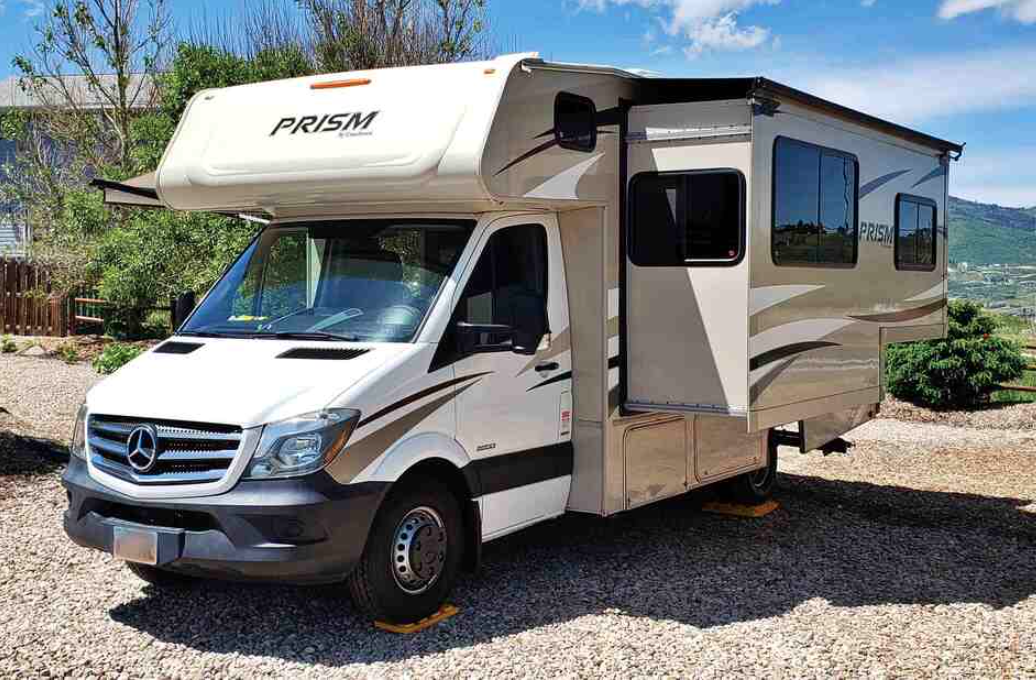


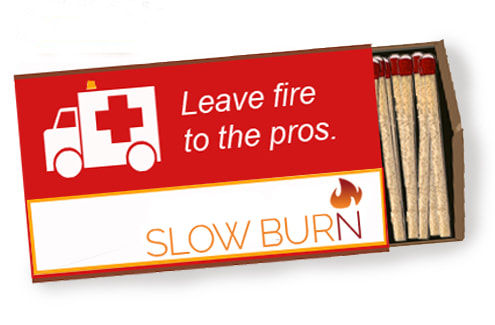
 RSS Feed
RSS Feed

